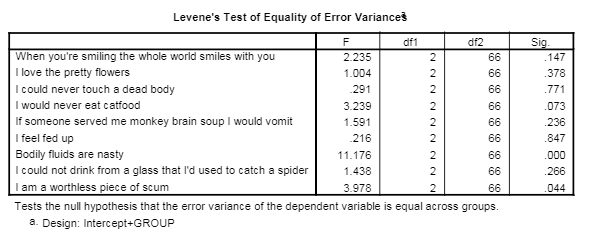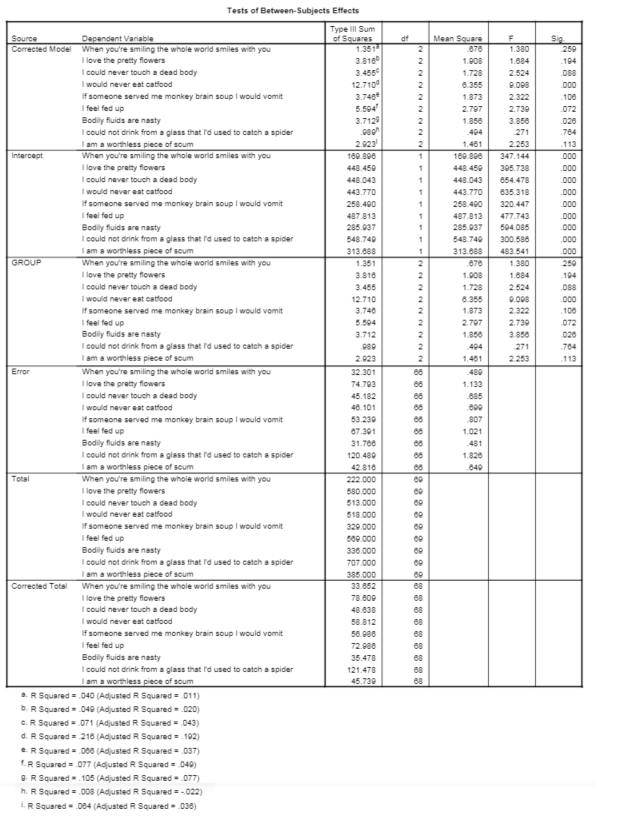A psychologist was interested in gauging the success of a mood manipulation during one of her experiments. She had three groups of participants who underwent different types of mood induction: disgust mood induction, negative mood induction and positive mood induction. After the mood induction, participants were asked to endorse nine statements relating to their mood (on a 5 point Likert scale from 1-disagree to 5-agree) : (1) When you're smiling the whole world smiles with you, (2) I love the pretty flowers, (3) I could never touch a dead body, (4) I would never eat cat food, (5) If someone served me monkey brain soup I would vomit, (6) I feel fed up, (7) Bodily fluids are nasty, (8) I could not drink from a glass that I'd used to catch a spider, (9) I am a worthless piece of scum. What analysis should be done to see if the mood inductions had an effect on responses to these 9 items. part of the output is shown below. Which statement best sums up this part of the output? 

Definitions:
Classical Conditioning
A learning process in psychology where two stimuli are repeatedly paired together until an individual associates them with each other, leading to a change in behavior.
CS
An abbreviation often used in psychology and neuroscience for "Conditioned Stimulus," a component of classical conditioning.
US
In the context of classical conditioning, it stands for the Unconditioned Stimulus, which automatically triggers a response without any learning needed.
Conditioned Stimulus
A formerly neutral cue that, after being linked with an unconditioned stimulus, comes to evoke a conditioned response over time.
Q1: What effect does 'centering' have on the
Q2: Which of the following is not an
Q2: What is a moderator variable?<br>A) A variable
Q3: What is the points difference between first
Q4: A music teacher had noticed that some
Q7: If this following data were inputted as
Q13: In terms of Mauchly's test of sphericity,
Q14: Using the SPSS output below, which of
Q15: Which of the following is representative of
Q24: In IBM SPSS, what does clicking on